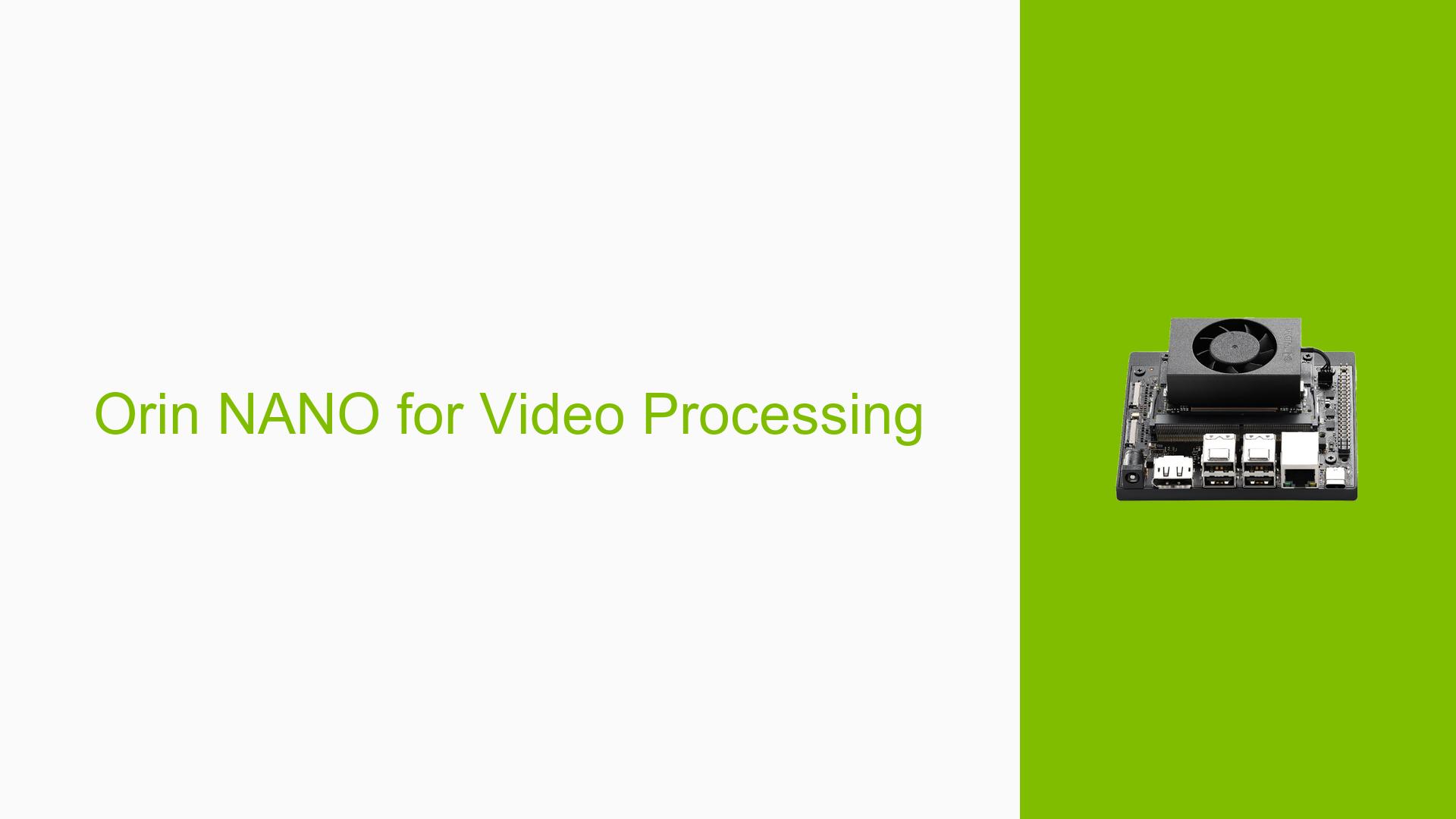Orin NANO for Video Processing
Issue Overview
The discussion revolves around the capabilities of the Nvidia Jetson Orin Nano Dev board in relation to specific video processing requirements. Users are inquiring whether the Orin Nano can support advanced video input and output functionalities, including:
- Input/Output Specifications: The user is seeking confirmation on whether the Orin Nano can handle 4X SDI or HDMI inputs, and produce 4x MPEG2/H.264/H.265 output streams.
- Streaming Requirements: The requirement includes supporting 4X streams at 1080P/60 with chroma subsampling options of 4:2:0 and 4:2:2, along with audio encoding capabilities such as AC3 2.0, MPEG L2, and AAC.
The context of the issue arises during the evaluation phase for video processing applications, where users are assessing hardware compatibility for their specific needs. The frequency of such inquiries suggests a consistent interest in the Orin Nano’s capabilities among potential users.
The impact of this inquiry is significant as it directly affects users’ decisions on whether to adopt the Orin Nano for their projects or consider alternative devices within the Orin series.
Possible Causes
-
Hardware Limitations: The Orin Nano may not have sufficient hardware capabilities to support multiple high-definition video streams simultaneously.
-
Software Compatibility: There could be software limitations or bugs that prevent optimal performance with specific video codecs or streaming formats.
-
Configuration Errors: Misconfigurations in settings related to input/output streams may lead to failure in achieving the desired video processing outcomes.
-
Driver Issues: Outdated or incompatible drivers could hinder the board’s ability to process video streams effectively.
-
User Misunderstanding: Users may not fully understand the capabilities of the Orin Nano compared to other devices in the Orin series.
Troubleshooting Steps, Solutions & Fixes
-
Check Technical Specifications:
- Review the official Nvidia documentation for detailed specifications of the Jetson Orin Nano. This will clarify supported input/output formats and streaming capabilities.
-
Update Drivers:
- Ensure that all drivers are up-to-date. Use the following command to check for updates:
sudo apt update && sudo apt upgrade
- Ensure that all drivers are up-to-date. Use the following command to check for updates:
-
Test Configuration Settings:
- Verify that all configuration settings related to video inputs and outputs are correctly set. This includes checking resolution settings and codec configurations.
-
Isolate Hardware Issues:
- If possible, test with different hardware configurations (e.g., using different cables or input sources) to determine if hardware incompatibility is causing issues.
-
Run Diagnostic Commands:
- Utilize diagnostic commands to gather system information about video processing capabilities:
nvidia-smi - This command provides details about GPU utilization and driver versions.
- Utilize diagnostic commands to gather system information about video processing capabilities:
-
Experiment with Different Streams:
- If issues persist, attempt running fewer streams or lower resolutions to ascertain if performance improves.
-
Refer to Community Resources:
- Engage with community forums or resources for shared experiences regarding similar issues. This can provide insights into successful configurations or workarounds.
-
Consider Alternative Models:
- If the Orin Nano does not meet requirements, evaluate other models in the Orin series that might offer enhanced capabilities for video processing tasks.
-
Documentation Links:
- Regularly check Nvidia’s developer site for updates on firmware upgrades and additional documentation that may address compatibility concerns.
-
Best Practices:
- Before starting a project, thoroughly research and document all hardware requirements and ensure compatibility with the chosen Nvidia Jetson model to avoid misconfigurations in future projects.
By following these steps, users can systematically troubleshoot issues related to video processing on the Nvidia Jetson Orin Nano Dev board while maximizing its potential capabilities. Further investigation may be needed if issues persist despite following these recommendations, especially regarding specific codec support or advanced features not covered in standard documentation.
